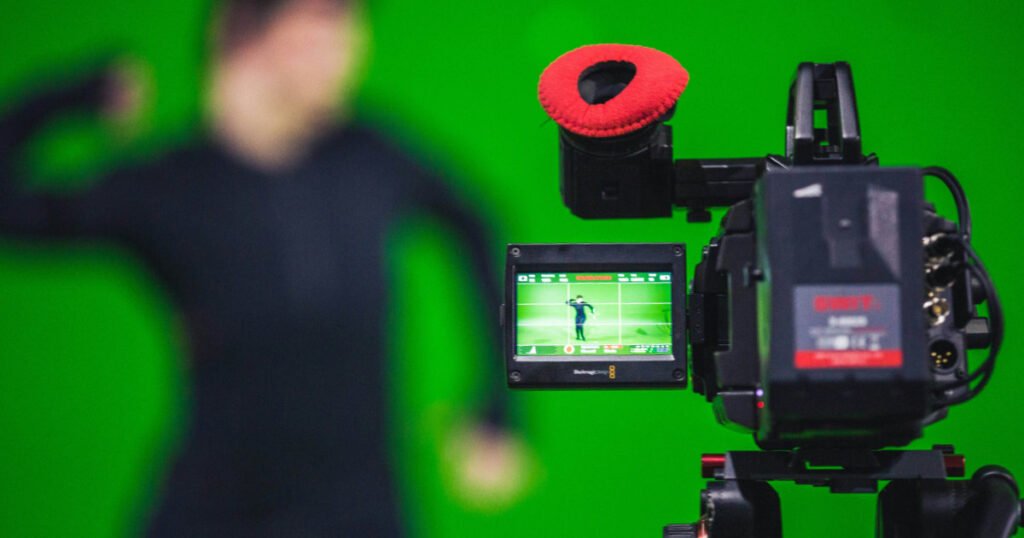Green Screen Magic in Filmmaking


Ever wondered how filmmakers pull off those unbelievable scenes that defy the laws of physics or take you to otherworldly realms? It’s all about mastering green screen – the art of invisible effects. From small indie projects to big-budget blockbusters, the use of green screen, or chroma key compositing, has become a staple in creating visual magic.
The Basics of Green Screen Technology
Alright, so you’re getting your feet wet in the world of green screen, huh? The first thing to know is that green screen technology is all about creating a singular, uniform color background – typically that vivid, almost fluorescent green. Why green? Well, it’s because it doesn’t match any natural skin tone or hair color, making it easier to separate the subject from the background in post-production. It’s like the initial step of a magical journey, where you’re setting the stage for something awesome.
Now, lighting is key. You’ve got to light your green screen evenly with no shadows or wrinkles. This is crucial because any variation in the background color can make keying out the background a nightmare. Think of it like painting a canvas with a single shade – any inconsistency, and your final masterpiece won’t look as polished. It’s not just about throwing some lights up; it’s about meticulous placement and adjustment to get that perfect, even backdrop.
Chroma Key Compositing: Merging Real and Virtual
Chroma key compositing is where the real magic happens. This is the process of removing the green background and replacing it with literally anything you can imagine. Could be a bustling cityscape, a distant galaxy, or a dramatic landscape – the only limit is your creativity. The key (pun intended) here is precision. You’ve got to have a keen eye to ensure the edges around your subject are clean and that there’s no ‘spill’ – that’s when a bit of the green color reflects onto your subject.
Software plays a big role here. Tools like Adobe After Effects or Autodesk Maya are powerhouses in this arena. They offer a range of features to fine-tune your compositing. It’s about tweaking the edges, adjusting the color spill, and ensuring that your subject blends seamlessly into the new background. It’s like being a conductor, orchestrating the perfect harmony between the real and the virtual.
Advanced Techniques in Green Screen Filmmaking
As you get more comfortable with green screen, you’ll start dabbling in more advanced techniques. One popular method is using tracking markers on the green screen. These are small, distinct markers placed around the subject or along the green screen. They help in tracking the movement of the camera or the subject, allowing for more dynamic and complex shots. It’s like giving GPS directions to your post-production software, guiding it on how to move the background in sync with the camera.
Another advanced technique is using green screen for adding smaller elements or effects to a scene. Think of it as the cherry on top of your visual effects sundae. It could be something like adding fantastical creatures into a scene or enhancing an environment with additional elements. This requires a keen eye for detail and a solid understanding of how your added elements interact with the live-action footage.
Future Trends and Innovations in Chroma Keying
Looking ahead, the future of green screen technology is as exciting as it is boundless. We’re talking about advancements like AI and machine learning algorithms that can automate and refine the keying process, making it faster and more accurate. Imagine software that can instantly recognize and perfectly key out any background, no matter how complex.
Another trend on the horizon is the integration of virtual reality (VR) and augmented reality (AR) with green screen technology. This fusion could open up new realms of possibility for filmmakers, where they can blend real-world footage with virtual environments in real-time. It’s like stepping into a whole new dimension of filmmaking, where the lines between reality and fantasy become even more blurred.
In the ever-evolving world of filmmaking, mastering green screen technology is like learning a new language – the language of visual storytelling. Whether you’re just starting out or you’re an experienced editor looking to refine your skills, the art of invisible effects opens up a universe of creative possibilities. It’s about blending the real with the unreal, the practical with the digital, to create something truly mesmerizing.
Remember, the key to success with green screen is a blend of technical know-how, creative vision, and a willingness to experiment. So, dive in, play around with different techniques, and watch as your filmmaking transforms into something extraordinary. Who knows what incredible worlds you’ll create next?
Looking to dive deeper into the world of filmmaking technology? Check out our insights on another cutting-edge technique that’s revolutionizing the industry: the art of bringing characters to life with motion capture. It’s a realm where technology meets creativity, pushing the boundaries of what’s possible in film and beyond.

Responses